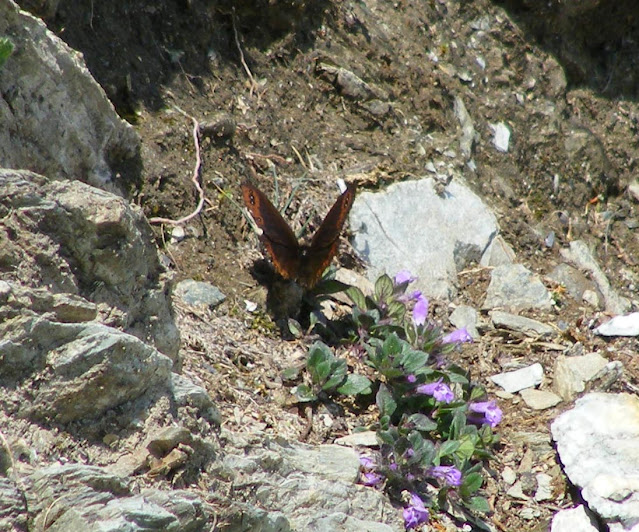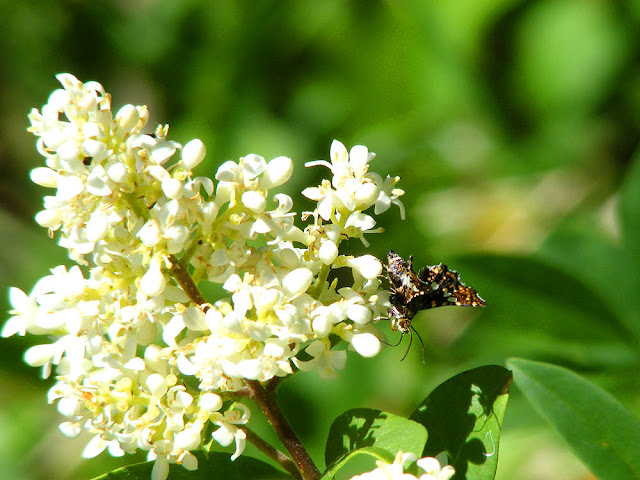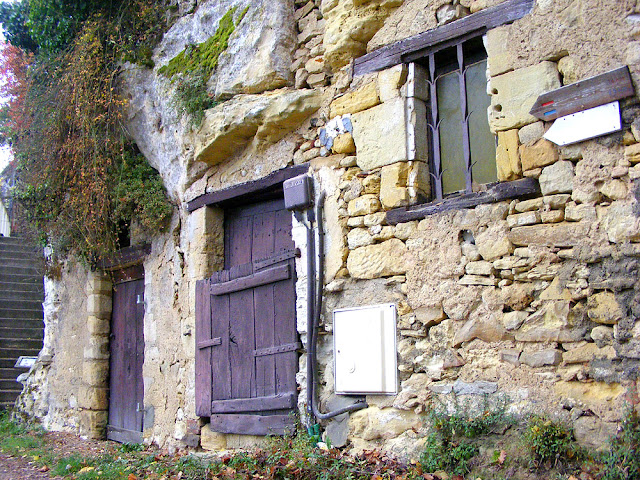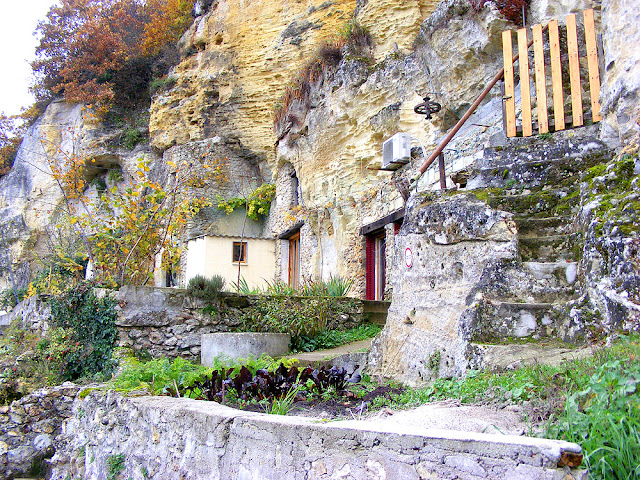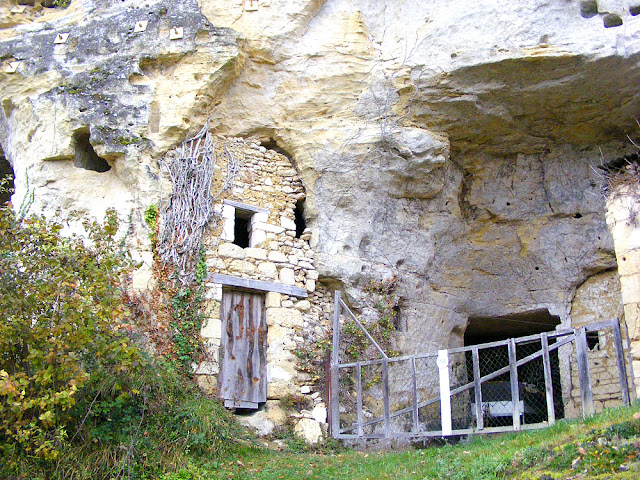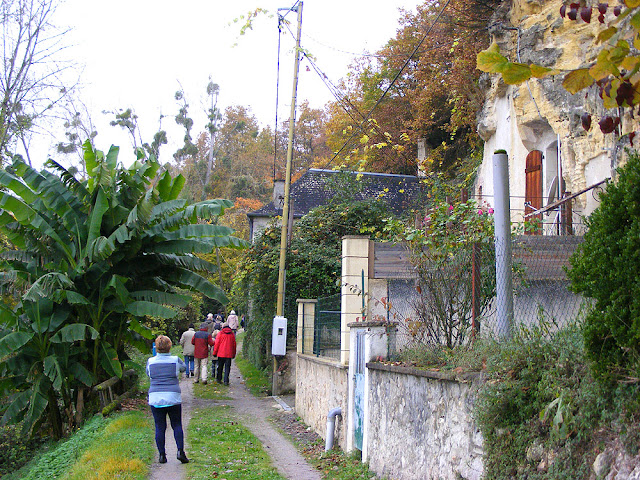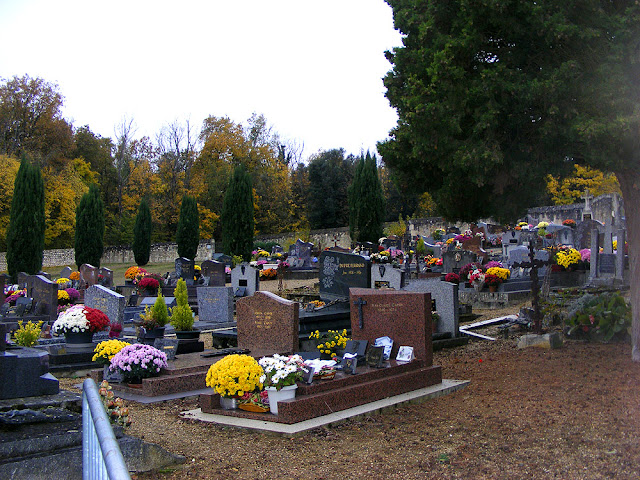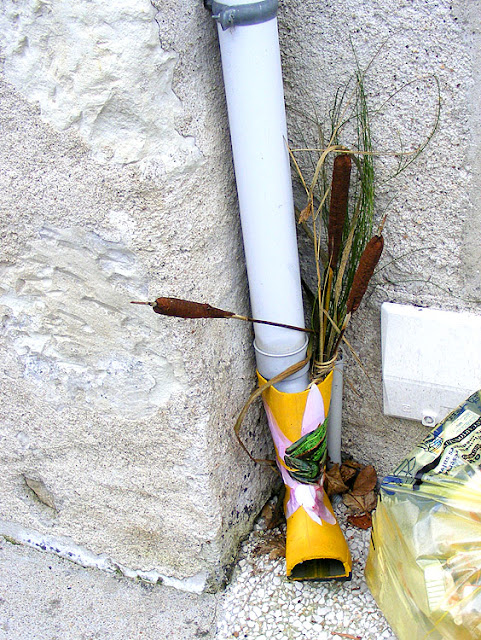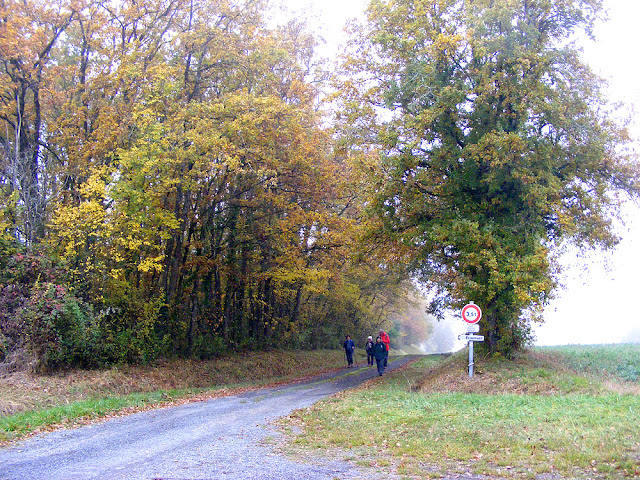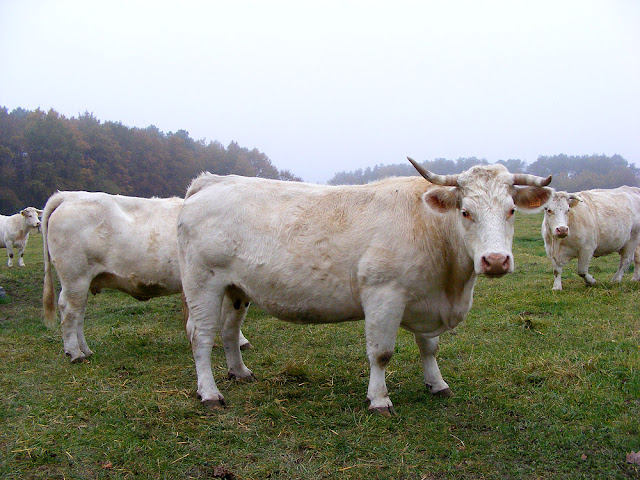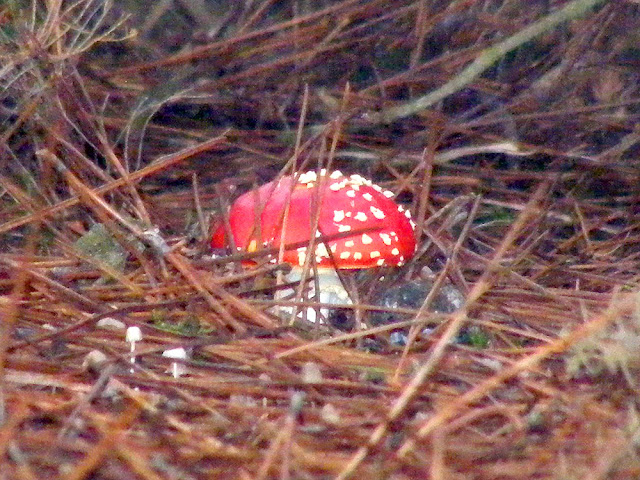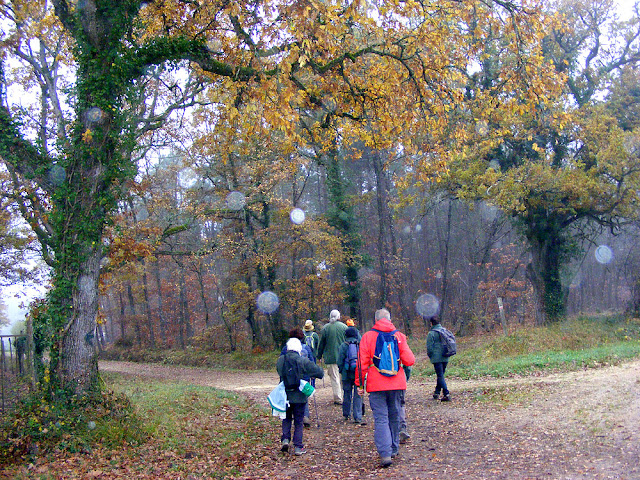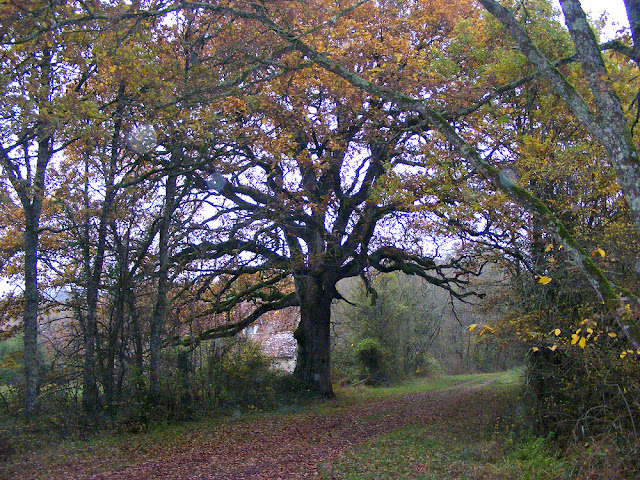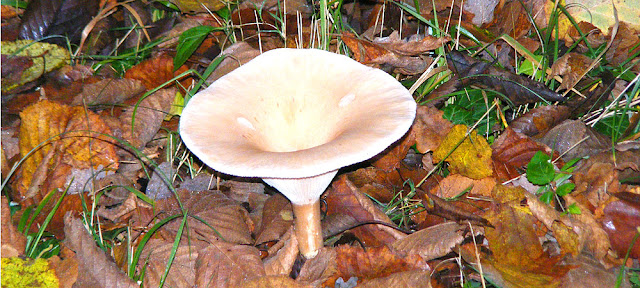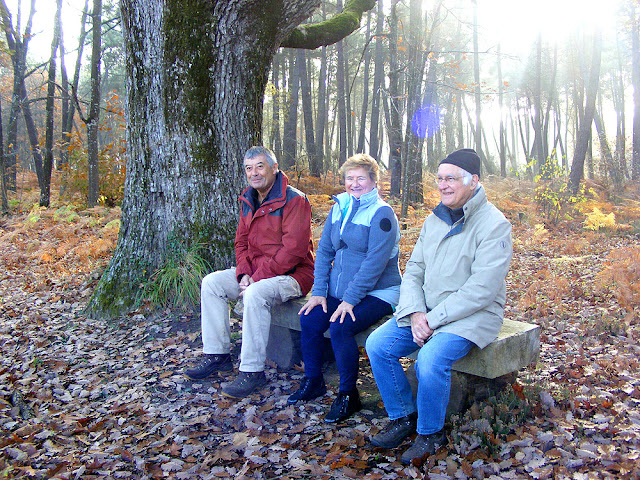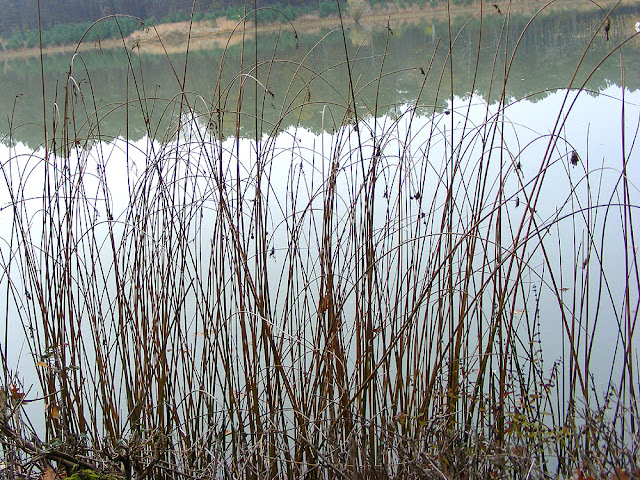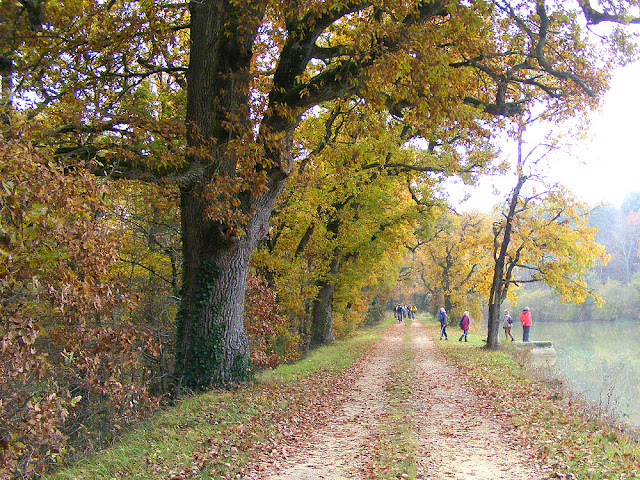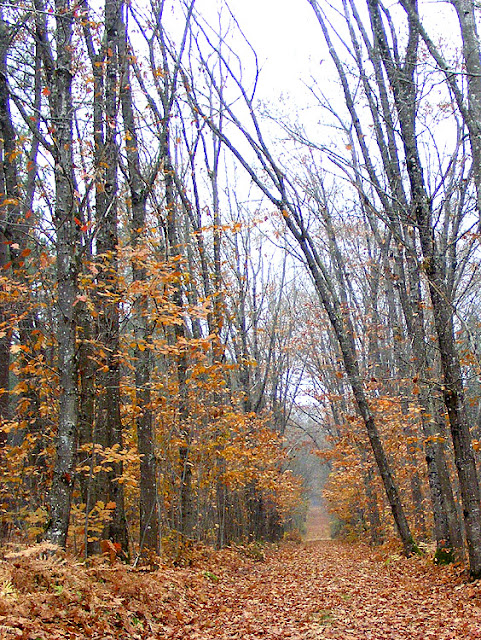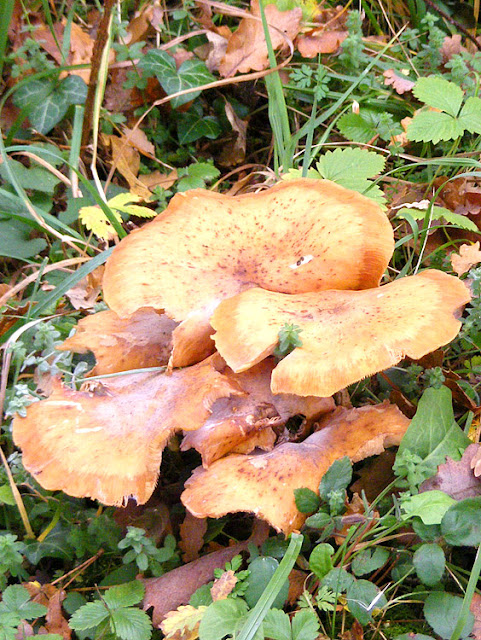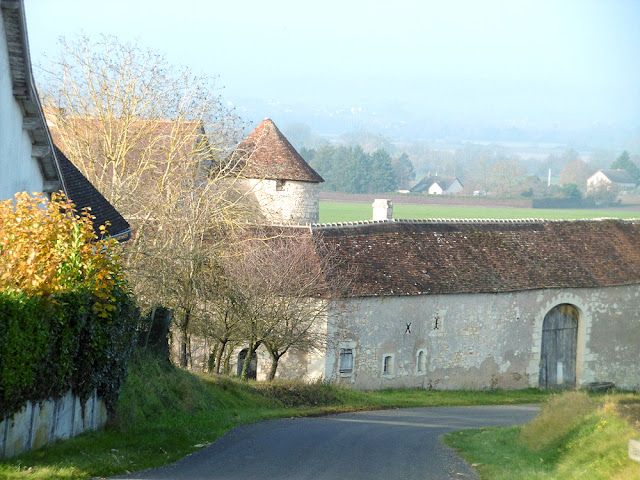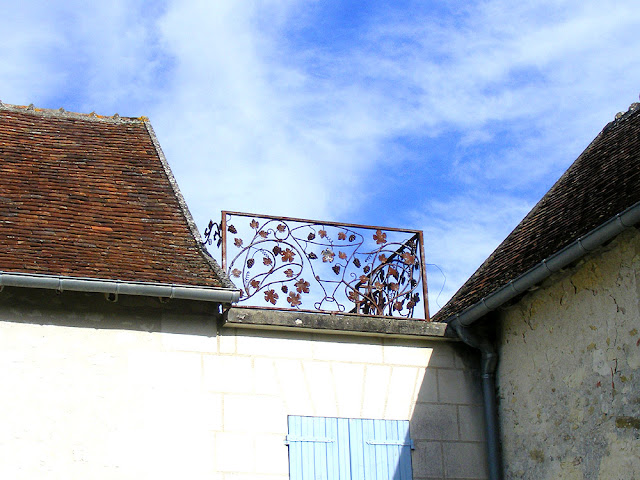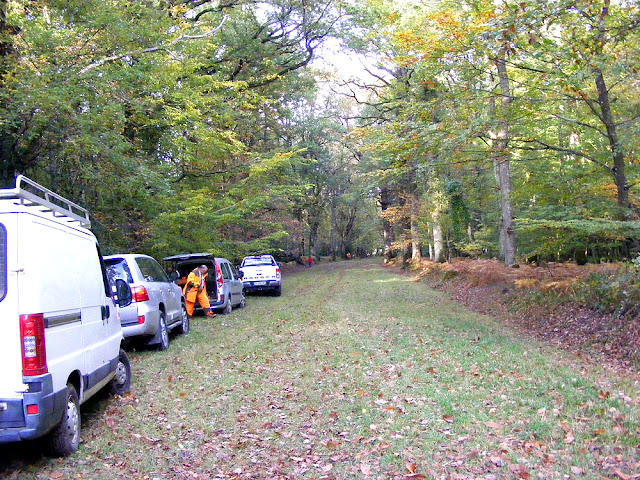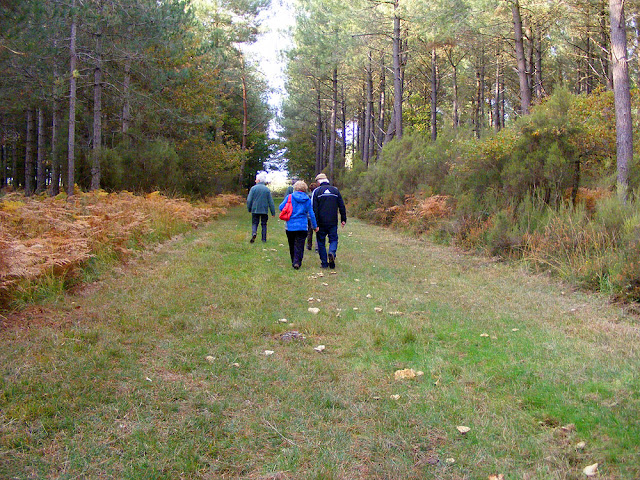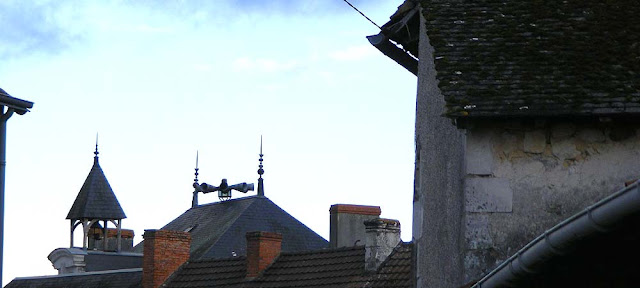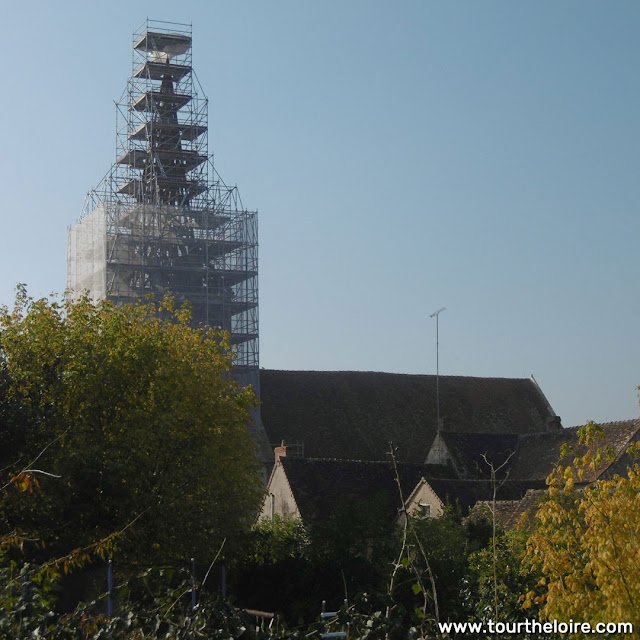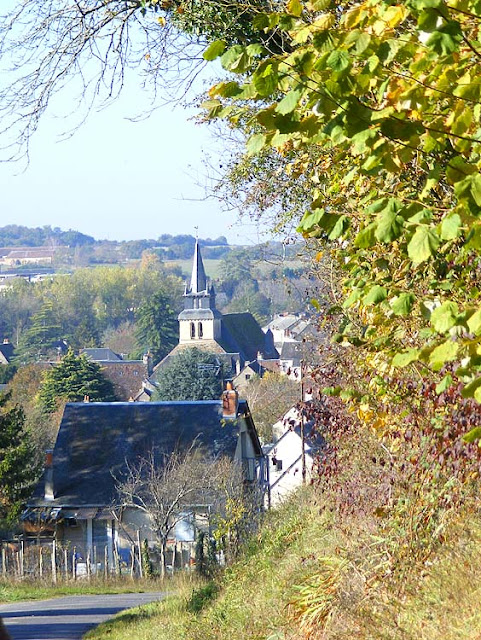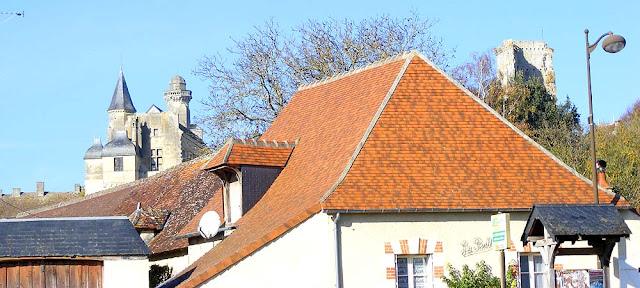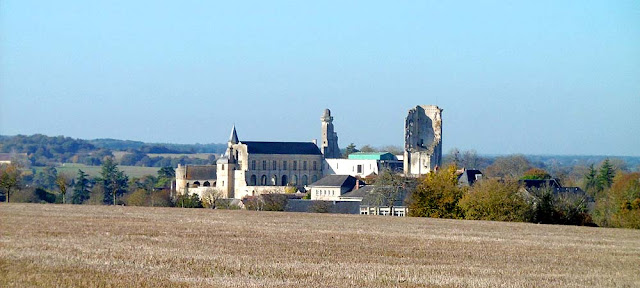 |
Henri Carvallo, the owner, talking about the history and architecture of the chateau building at Villandry.
|
Summer Jauneaud, who runs the Loire ConneXion, organised a private visit of the Chateau and gardens of Villandry, with guided tour by owner Henri Carvallo. The Loire ConneXion is a social group that brings expats and locals together for drinks and outings.
 |
Dining room table setting in the Chateau de Villandry.
|
Henri Carvallo gave us a potted history of the Chateau, the last of the well known Loire Valley chateaux from the Renaissance. It was built in 1532 by Jean le Breton, financier to Francois I, who demolished the earlier 12th century fortress on the site. Like Azay le Rideau was intended to be, it is a U-shaped building, but unlike Azay le Rideau, the building terminates in square pavilions, rather than round towers, indicating how architectural fashion had moved on from the pure Italianate of Azay le Rideau to something more French at Villandry.
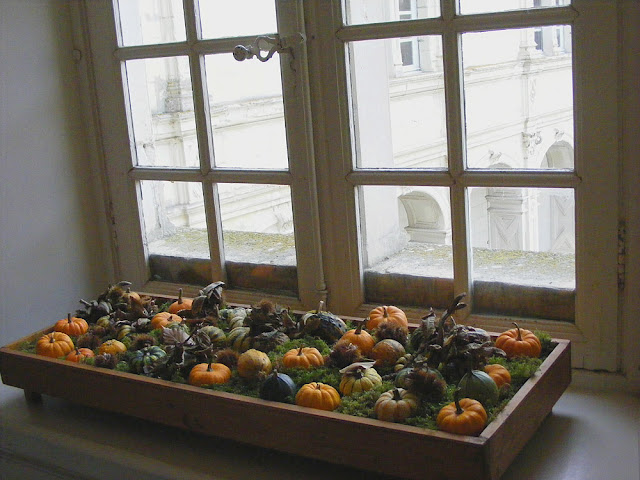 |
Display of miniature pumpkins on a window sill in the Chateau de Villandry.
|
Jean le Breton was also interested in gardens and in his time set his chateau in splendid ornamental gardens. Jump forward to the early 20th century and medical researchers Joachim Carvallo and Ann Coleman acquired the chateau in 1906. They first set about restoring the building and creating a family home, but then they turned their energies to the garden. They felt that a Renaissance chateau deserved a Renaissance garden. And it is their garden that people come to see today.
 |
Henri Carvallo talking about a set of paintings he acquired depicting Jean le Breton as Ambassador to the Ottoman court.
|
The gardens opened to the public in 1920 and have been managed organically since 2009. The Carvallo family no longer live in the Chateau itself, but in an apartment in the enormous stable block, along with most of the nine full time gardeners and two apprentice gardeners who manage the grounds. This has allowed the interior of the Chateau to also be opened up to the public, and about 50% of visitors pay the extra to see inside the building.
 |
A view of the gardens from one of the first floor windows in the Chateau de Villandry.
|
Because the framework of the garden as a whole is so good it is worth visiting at any time of year. But because the most famous part of the garden relies on formal parterres planted with vegetables for their decorative effect, this is not really a spring garden as so many others are. This is a garden which peaks in late summer and early autumn, when all the fruit and vegetables have matured.
 |
Walking down one of the linden alleys in the gardens of the Chateau de Villandry.
|
Our visit started at 4 pm, on a dull November day when sunset is at 5.30 pm, so light conditions were not the best for taking stunning photographs. Nevertheless, I think you can still get a good idea of how impressive these gardens are.
 |
The mirror pool in the gardens of the Chateau de Villandry.
|
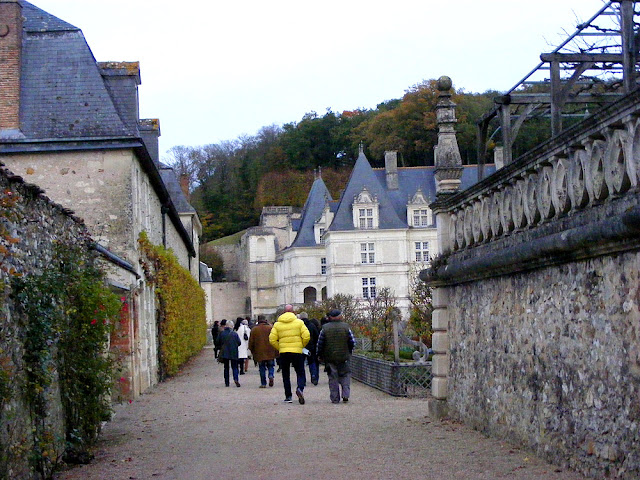 |
Walking between the stable block and the potager.
|
 |
Walking through the potager with the Chateau and natural hillside in the background.
|
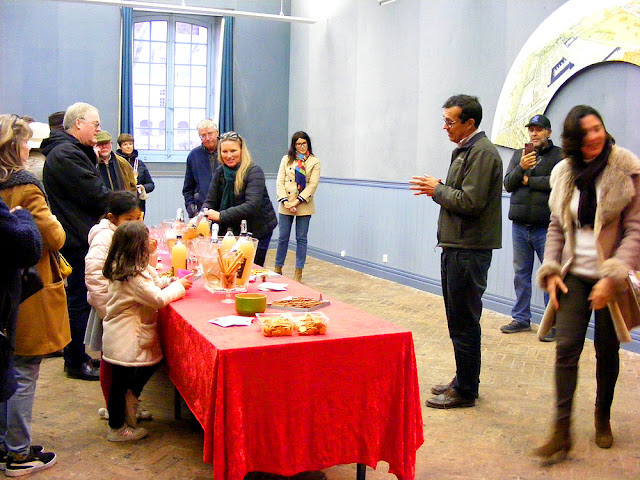 |
| Members of the Carvallo family welcome our group with drinks and nibbles. |
 |
The Herb Garden, added in the 1970s.
|



